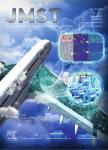Effects of welding speed on the multiscale residual stresses in frictionstir welded metal matrix composites
Effects of welding speed on the multiscale residual stresses in frictionstir welded metal matrix composites作者机构:Shenyang National Laboratory for Materials Science Institute of Metal Research Chinese Academy of Sciences Shenyang 110016 China Fraunhofer Institute for Industrial Mathematics Fraunhofer-Platz 1 Kaiserslautern 67663 Germany German Engineering Materials Science Centre Helmholtz-Zentrum Geesthacht D-21502 Geesthacht Germany Heinz Maier-Leibnitz Zentrum (MLZ) Technische Universitat Munchen D-85747 Garching Germany
出 版 物:《Journal of Materials Science & Technology》 (材料科学技术(英文版))
年 卷 期:2019年第35卷第5期
页 面:824-832页
核心收录:
学科分类:08[工学] 0805[工学-材料科学与工程(可授工学、理学学位)]
基 金:supported financially by the National Key R&D Program of China (No. 2017YFB0703104) the National Natural Science Foundation of China (No. 51401219)
主 题:Metal-matrix composites (MMCs) Friction stir welding Residual/internal stress Neutron diffraction Finite element analysis (FEA) Multiscale simulation
摘 要:The effects of welding speed on the macroscopic and microscopic residual stresses(RSes) in friction stir welded 17 vol.% SiCp/2009 Al-T4 composite plates were studied via neutron diffraction and an improved decoupled hierarchical multiscale modeling methods. Measurements showed that the macroscopic and total RSes had the largest variations in the longitudinal direction(LD). Increasing the welding speed led to higher values of measured LD macroscopic and total RSes in the matrix. The welding speed also significantly influenced the distributions and magnitudes of the microscopic RSes. The RSes were predicted via an improved hierarchical multiscale model, which includes a constant coefficient of friction based thermal model. The RSes in the composite plates before friction stir welding(FSW) were computed and then set as the initial states of the FSW process during modeling. This improved decoupled multiscale model provided improved predictions of the temperature and RSes compared with our previous model.



